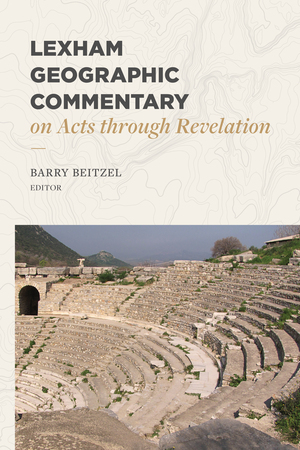by Chris McKinny
As we enter into the holiday of Shavuot/Pentecost – this year from May 28-30 – I thought this would be a good occasion to discuss the location and setting of Shavuot/Pentecost in AD 33 (or AD 30 if you prefer). That festival of course was the setting of the events that are recorded in Acts 2 – which detail the coming of the Holy Spirit.
There are two main candidates for the location of the coming of the Holy Spirit on Pentecost – the Church of the Upper Room/Cenacle and the Temple Mount. For several reasons, I think it is much more likely that this event occurred only on the Temple Mount, but we will discuss this in more detail later. We will begin by discussing the traditional candidate – the Church of the Upper Room. The text below is excerpted from “The Location of Pentecost and Geographical Implications in Acts 2,” which I wrote for Beitzel, Barry, ed. Lexham Geographic Commentary on Acts through Revelation. 2. Lexham Press, 2019 or for the entire excellent (and quite unique!) series see here. This series is highly recommended!
Before we begin – readers may be interested in reading and watching last year’s 3D scan of the Cenacle produced by Alex Wiegmann in connection with Amit Reʿem’s excavation and re-analysis of the building (also cited below). You can also read about the small-scale excavation that took place several years ago in the courtyard. Readers may also be interested in the excellent study of the building by David Clausen.
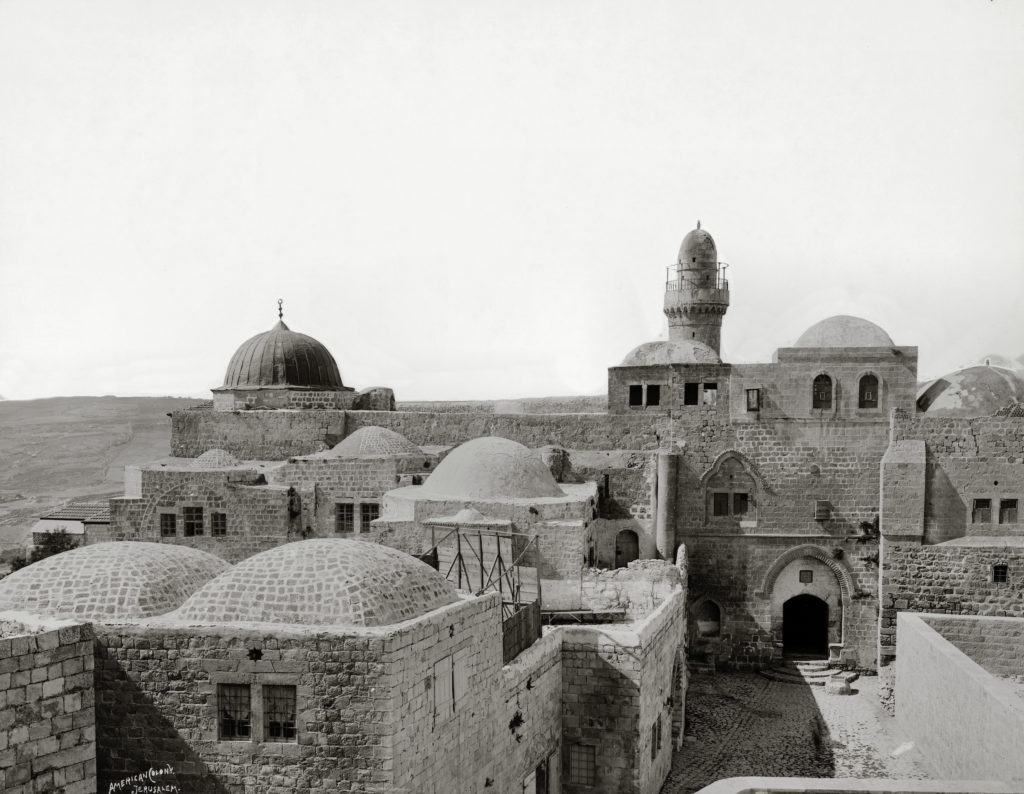
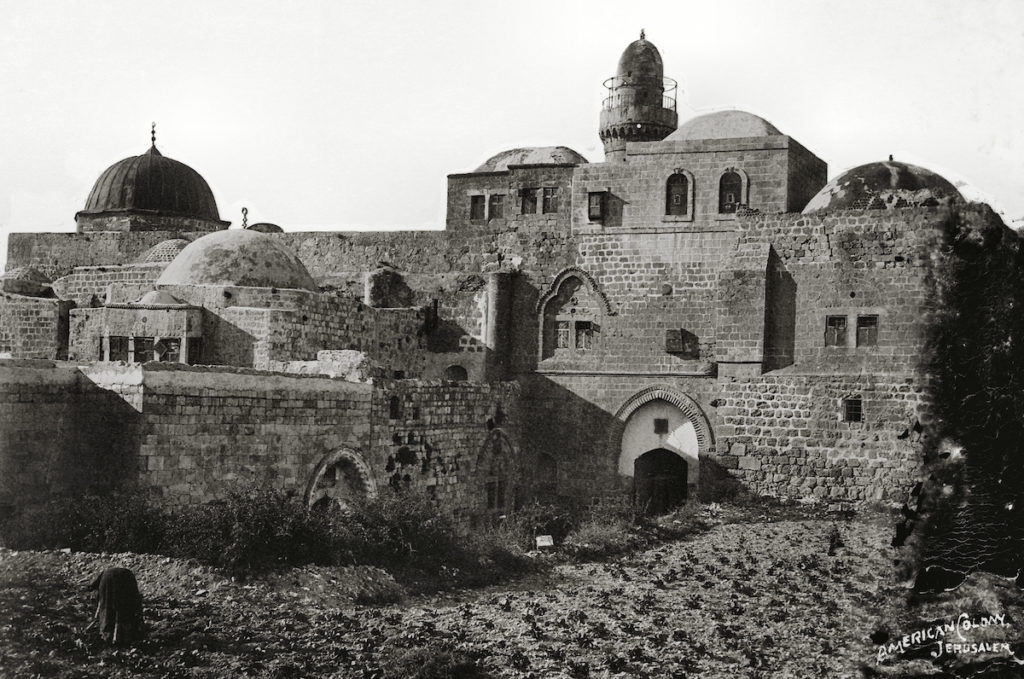
Beginning of excerpt from McKinny, Chris. “The Location of Pentecost and Geographical Implications in Acts 2.” Pages 77–93 in Lexham Geographic Commentary on the Book of Acts through Revelation. Edited by Barry J. Beitzel. Lexham Press, 2019.
Textual Evidence
It should be noted that we are only attempting to pinpoint the location of the apostle’s reception of the Holy Spirit (Acts 2:1-4). Thus, we are not questioning the location of the reaction of the multi-ethnic multitude (Acts 2:5-13) or Peter’s sermon (Acts 2:14-40). It would seem obvious that these events clearly took place on the temple mount. This is made clear by the reference to many Jewish worshipers hearing their own native tongues on the lips of the Aramaic-speaking disciples (Acts 2:6-12). In addition, Acts 2:41 indicates that those “who received his (Peter’s) word were baptized, and there were added that day about three thousand souls.” This number should be compared to the “120” in Acts 1:15, who were present at the selection of Matthias as the replacement for Judas (Acts 1:15-26). The setting of this earlier event is clearly the “upper room” (Acts 1:13). However, there seems to be a time gap between Acts 1:26 and 2:1, as noted by the reference to “when the day of Pentecost arrived.” Thus, the events of Acts 1:15-26 (the selection of Mattathias) and Acts 2:1-4 (the outpouring of the Spirit upon the disciples) are separate events, even if the setting of the latter has not been certainly determined. In any event, the baptism of 3,000 people is clearly a mass religious event that would have required a large facility with available ritual baths.[1] Excavations around (various) and beneath (C. Warren in the 1860s) the temple mount revealed numerous ritual baths and cisterns that would have been available to second temple Jewish worshipers.[2] Therefore, we can conclude that the majority of Acts 2 occurred on the temple mount and its environs, but the location of the event in Acts 2:1-4 remains debated.
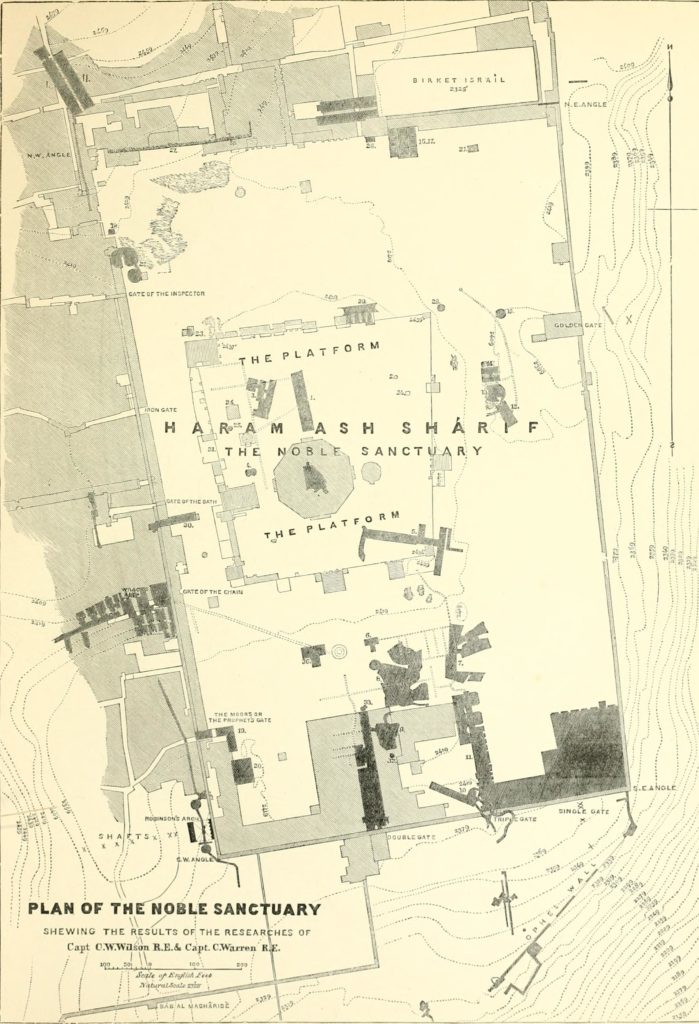
From a textual standpoint, the location of Pentecost may possibly be connected to the “upper room” of Acts 1:14 by the reference in Acts 2:1-2. The latter indicates that the outpouring of the Spirit occurred where they were “all together in one place” and describes the Spirit’s rushing wind noise as “filling the entire house.” However, a literary connection between these two passages is not definitive, as no transition from the presumed “upper room” location to the temple mount is included in Acts 2:4-5. Moreover, Acts 2:6 indicates that the multitude heard “this sound” (i.e., the rushing wind of Acts 2:2), so in order to hold to the traditional view (see below) that Pentecost occurred in the upper room (i.e., on the western hill) then one must assume that the apostles moved from there to the temple mount after receiving the Holy Spirit.
Traditional Evidence
While the evidence for locating the outpouring of the Spirit in Acts 2:1-4 from the Book of Acts is relatively inconclusive, Byzantine tradition clearly favored a connection between the upper room of the Last Supper and the location of Pentecost connecting both events with the Cenacle/Tomb of David on Mt. Zion.[3] The two earliest traditions come from Cyril of Jerusalem (c. 315-373 CE)[4] and Epiphanius of Constantia/Salamis (c. 315-403 CE),[5] who connected the “Upper Church of the Apostles” or the “Church of God” with the events of Pentecost. Notably, Epiphanius’ referred to the “Church of God” beside the “seven synagogues which alone remained standing in Zion.” While not mentioning the church directly, the anonymous Pilgrim of Bordeaux (written in c. AD 333) provides even earlier testimony corroborating Epiphanius’ statement about seven synagogues on Mount Zion (i.e., the western hill).[6] After visiting the Pool of Siloam and the Gihon Spring the Pilgrim writes,
“On this side one goes up Sion, and sees where the house of Caiaphas the priest was, and there still stands a column against which Christ was beaten with rods. Within, however, inside the wall of Sion, is seen the place where was David’s palace.[7] Of seven synagogues which once were there, one alone remains; the rest are ploughed over and sown upon, as said Isaiah the prophet (actually Mic 3:12; cf. Isa 1:8, Itinerarium Burdigalense Jerusalem).”[8]
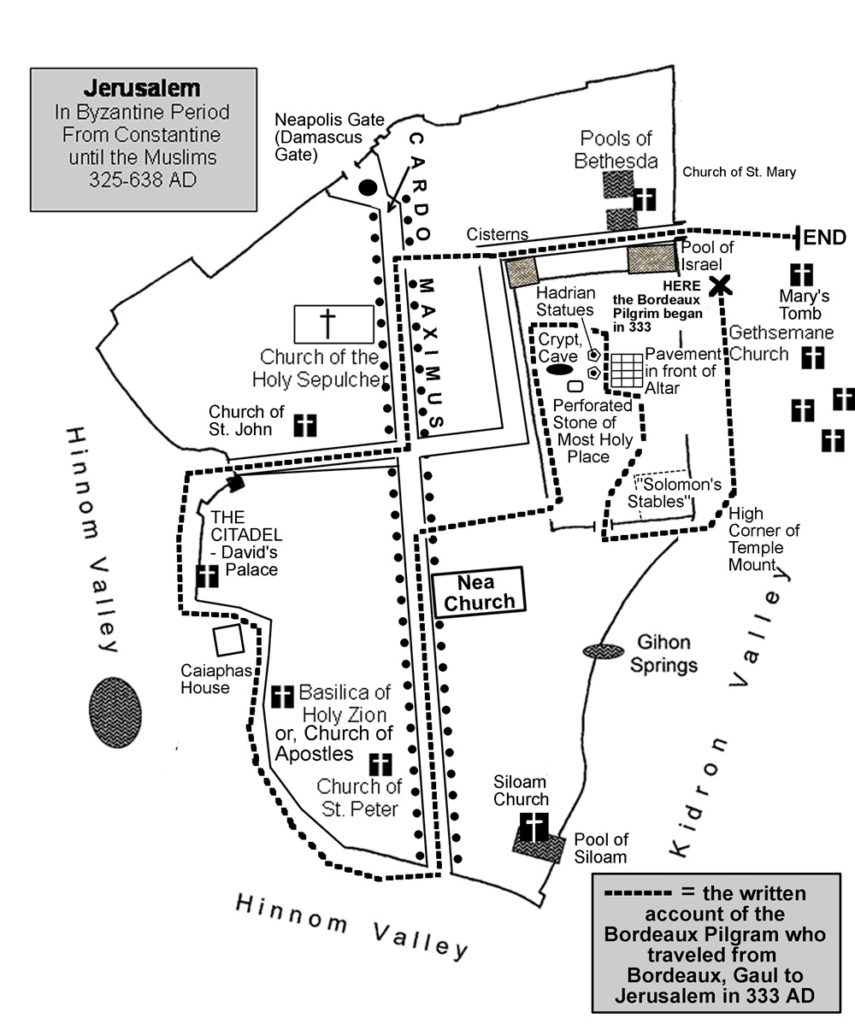
These traditions indicate that the western hill of Jerusalem was still in ruins during the 4th century AD. Within these ruins, only one of the seven synagogues remained with the rest presumably destroyed in either the AD 70 destruction by Titus or following the Bar Kochba Revolt in AD 132-135. Notably, this lone remaining synagogue (see Epiphanius and the Pilgrim) is distinct from the “the church of God” (Epiphanius), which was built in the small area of the western hill that “escaped destruction.” Eusebius (Ecc. Hist. 3.5.3) and Epiphanius (Weights 54a) relay that the Jewish-Christian community of Jerusalem, which had fled to Pella during the Jewish Revolt, returned to Jerusalem following the AD 70 destruction. Subsequently, they apparently resided in the city until the arrival of Hadrian (cf. Proof 3.5.124d). Later Byzantine tradition held that it was this community that built the church on Mount Zion connected with the Last Supper and Pentecost.[9] In the late 4th century AD, the large Hagia Sion church[10] was built on the western hill in near proximity to the pre-existing “Upper Church of the Apostles.” Christian pilgrim accounts, iconographic,[11] and archaeological evidence (see below), indicate that these two buildings were separate, but nearby structures as late as the 7th century.
To this point, we can conclude the following. First, Byzantine tradition connecting the “Upper Church of the Apostles” with the upper room of the Last Supper and Pentecost is well attested by the earliest Christian sources. Second, to my knowledge there does not appear to be a rival Byzantine tradition connecting Pentecost (whether the entire event or only the witness of the multitude and Peter’s sermon) with the temple mount. Third, it seems abundantly clear that there was an early Jewish-Christian community on the western hill, who built a church there at least sometime before Cyril of Jerusalem (c. AD 350). While it is possible that this church has not been located, it seems probable that the building known today as the Church of the Upper Room and the Tomb of David is in fact the original church built at some point before the mid-4th century AD.[12]
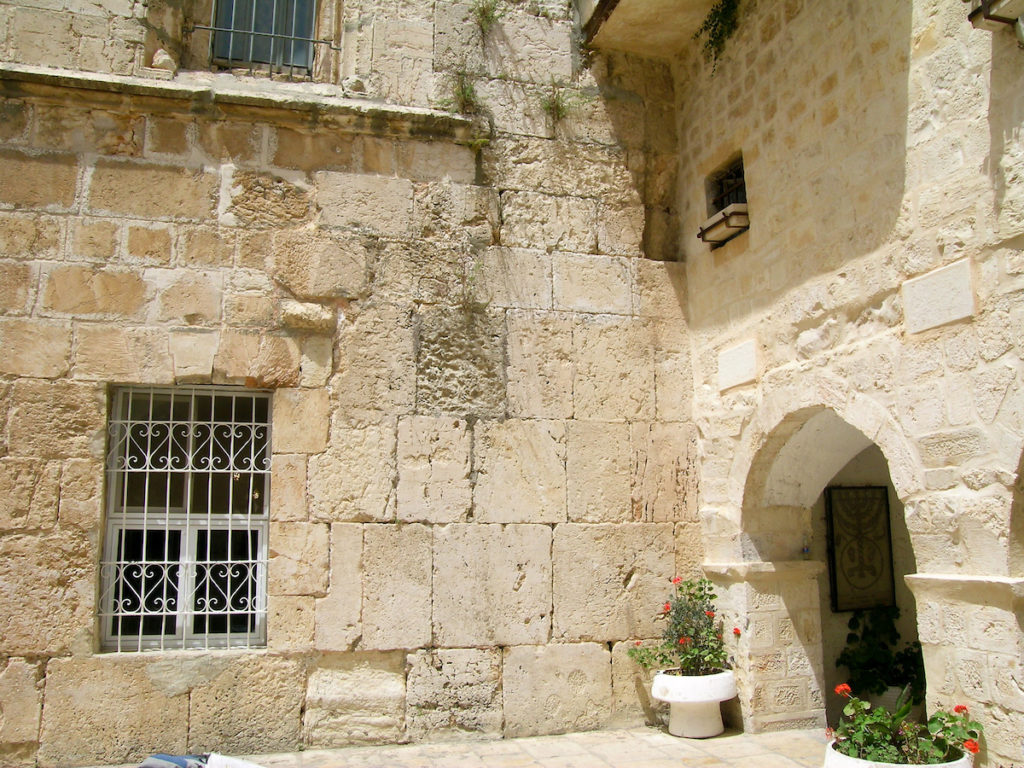
Archaeological Evidence
Possible archaeological support tying Pentecost to the Cenacle comes from the suggestions of Bargil Pixner. Pixner developed a complex theory that incorporated the biblical text, the above referenced traditions, and J. Pinkerfield’s unpublished excavations of the floor of the “Tomb of David” in 1949.[13] Pinkerfield claimed that the building was originally a synagogue constructed in the Late Roman period.[14] In response to this, Pixner agreed that it was a synagogue, but suggested that it should be dated to the 1st century AD since it was built using Herodian-style masonry. He further hypothesized that this synagogue was none other than the room of the Last Supper (as well as the home of John Mark), the location of Pentecost, and the church/synagogue that is referenced by Cyril of Jerusalem, Epiphanius, and the Pilgrim of Bordeaux.[15] While future excavations in the Cenacle might indicate the viability of Pixner’s theory, several scholars point out that there is very little archaeological evidence in support of Pinkerfield or Pixner’s conclusions suggesting that the original structure was a synagogue.[16] A recent, limited excavation inside of the Cenacle and in the adjacent courtyard by Reʿem seemed to indicate that the building was constructed in the 4th century AD.[17]
Conclusion
The Church of the Upper Room has early Christian tradition connecting it with both the location of the Last Supper and Pentecost. This tradition is probably based on a supposed textual connection between Acts 1:13 and 2:1-4. But as we have seen, Acts 2:1-4 does not necessarily have to be connected with the upper room. Therefore, I would conclude that this early Christian tradition connecting Pentecost with the upper room probably originated from a misreading of Acts 1-2 and not an independent Pentecost tradition. Nevertheless, this negative conclusion concerning the location of Pentecost does not mean that one should determine that the Cenacle was not the location of the Last Supper (as well as other possible connections, see above). Regarding the archaeology, we must remain cautious, but it appears that the Cenacle was either constructed or underwent significant building activity in the 4th century AD. This evidence matches the contemporary references to the “Upper Church of the Apostles,” if not their attestations to earlier building activity and occupation by “Jewish-Christians” during the Early and Late Roman periods.[18]
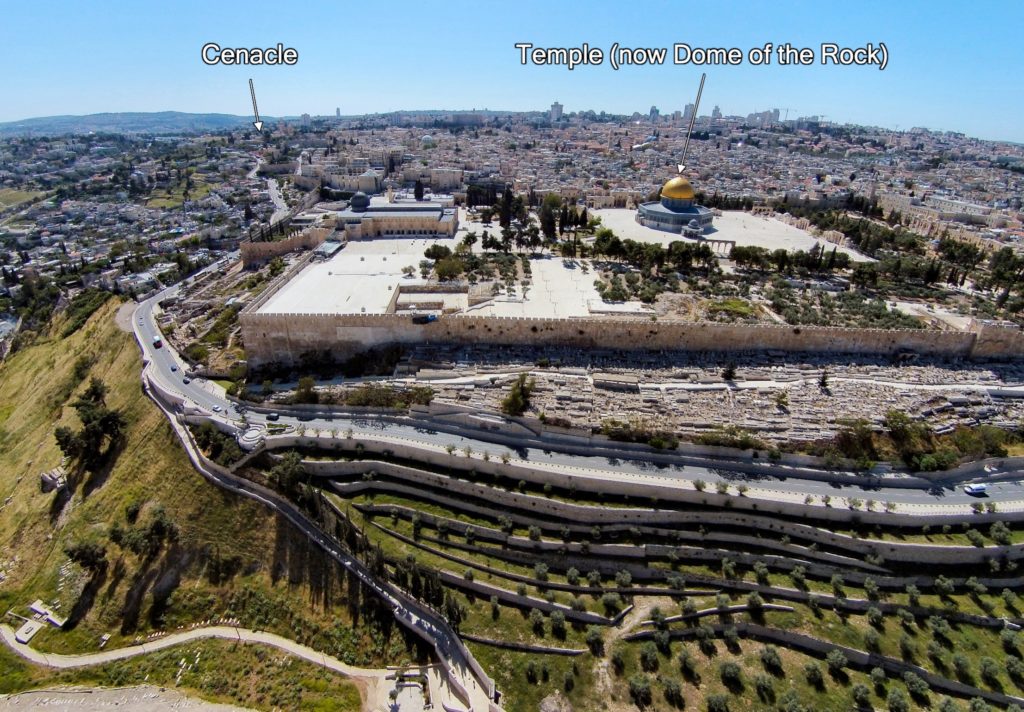

Therefore, if the Church of the Upper Room should not be connected with Pentecost, then it seems highly probable that the entirety of the Pentecost event (including Acts 2:1-4) took place in the temple precinct. From a historical and archaeological perspective, this conclusion clearly matches the purposes of the Herodian temple mount as a place for mass religious gathering. In addition, it is worth mentioning that religious Jews were supposed to be worshiping in the temple during the festival of Pentecost (Acts 20:6; 1 Cor 16:8), as well as during Passover (e.g., John 11:55) and Tabernacles (e.g., John 7:2). So, by referencing Pentecost (Acts 2:1), Luke is allowing for the inference that the disciples were in the temple, because that would be the obvious location for celebrating the feast. In addition, locating Pentecost entirely on the temple mount implies intertextual geographical parallels between the descent of the Holy Spirit on believers and the activities of Yahweh’s Spirit (in various forms) in the Old Testament.
We will discuss these intertextual geographic parallels in Part 2.
[1] E.g., C. S. Keener, The IVP Bible Background Commentary: New Testament, 2nd ed. (InterVarsity Press, 2014), 322.
[2] See discussion in L. Ritmeyer, The Quest: Revealing the Temple Mount in Jerusalem (Jerusalem: Carta, 2006), 221–33.
[3] Also known as the mother of all churches, the church of the apostles, the church of God, the Coenaculum, the church of the Upper Room, etc. See discussion in C. Kopp, The Holy Places of the Gospels (New York: Herder, 1963); A.F. Rainey and S. Notley, The Sacred Bridge: Carta’s Atlas of the Biblical World (Jerusalem: Carta, 2006), 370; see discussion in Jerome Murphy-O’Connor, The Holy Land: An Oxford Archaeological Guide from Earliest Times to 1700, 5th ed. (OUP Oxford, 2008), 115–18; see especially D. C. Clausen, The Upper Room and Tomb of David: The History, Art and Archaeology of the Cenacle on Mount Zion, Kindle version (Jefferson, North Carolina: McFarland, 2016).
[4] “We know the Holy Ghost, who spake in the Prophets, and who on the day of Pentecost descended on the Apostles in the form of fiery tongues, here, in Jerusalem, in the Upper Church of the Apostles; for in all things the choicest privileges are with us. Here Christ came down from heaven; here the Holy Ghost came down from heaven. And in truth it were most fitting, that as we discourse concerning Christ and Golgotha here in Golgotha, so also we should speak concerning the Holy Ghost in the Upper Church… (Catechetical Lectures, Lecture XVI.4).” See translation in Cyril of Jerusalem, St. Cyril of Jerusalem’s Lectures on the Christian Sacraments: The Procatechesis and the Five Mystagogical Catecheses, trans. F. L. Cross (St. Vladimir’s Seminary Press, 1951). Apparently, Cyril of Jerusalem also mentioned that the supposed bones of James (the brother of Jesus) were temporarily interned near the church, see Clausen, The Upper Room and Tomb of David, chapter 3.
[5] “And he (Hadrian) found the temple of God trodden down and the whole city devastated save for a few houses and the church of God, which was small, where the disciples, when they had returned after the Savior had ascended from the Mount of Olives, went to the upper room. For there it had been built, that is, in that portion of Zion which escaped destruction, together with blocks of houses in the neighborhood of Zion and the seven synagogues which alone remained standing in Zion, like solitary huts, one of which remained until the time of Maximona the bishop and Constantine the king, “like a booth in a vineyard,” as it is written (quoting Isa 1:8; Epiphanius Weights 54c).” Epiphanius of Salamis, Epiphanius’ Treatise on Weights and Measures: The Syriac Version, trans. J. E. Dean, Studies in Ancient Oriental Civilizations 11 (Chicago: Oriental Institute of the University of Chicago, 1935), 30.
[6] According to O’Connor, the Byzantine tradition relating the western hill of Jerusalem to Zion is rooted in a misunderstanding of Hebrew poetry, which employs synonymous parallelism instead of referring to two (or three) different hills in Jerusalem, see Murphy-O’Connor, The Holy Land, 115.
[7] These traditions connecting Zion and the Palace of David (cf. 2 Sam 5:11-12) with the western hill of Jerusalem are indicative of Byzantine confusion regarding the location of the original settlement of Jerusalem.
[8] Pilgrim of Bordeaux, Itinerarium Burdigalense, ed. A. Stewart, Online Edition-Corpus Christianorum, Series Latina 175 (London: Palestine Pilgrim’s Text Society, 1887), http://www.christusrex.org/www1/ofm/pilgr/bord/10Bord01MapEur.html.
[9] See sources in D. C. Clausen, “Can the Cenacle on Mount Zion Really Be the ‘Upper Room’ of Jesus’s Last Supper?,” The Bible and Interpretation May (2016), http://www.bibleinterp.com/articles/2016/05/cla408003.shtml; Clausen, The Upper Room and Tomb of David.
[10] The ruins of Hagia Sion are located beneath Dormition Abbey, which was constructed in the early 20th century.
[11] These include two 6th century AD depictions of the Hagia Sion church with a small church (presumably the Cenacle) in immediate proximity; the Medeba Map’s depiction of Jerusalem and a similarly dated mosiac from the Church of Santa Maria Maggiore in Rome. Clausen, “Can the Cenacle on Mount Zion Really Be the ‘Upper Room’ of Jesus’s Last Supper?,” 10–11; Clausen, The Upper Room and Tomb of David, chapter 3.
[12] See Clausen, The Upper Room and Tomb of David, chapters 12-14 who persuasively argues for this view against the suggestions of an original Jewish synagogue or a pagan Mithraeum.
[13] Before he could finish his report, Pinkerfield was murdered (along with three others) by Jordanian soldiers during an archaeological tour of Ramat Rahel in 1956.
[14] J. Pinkerfield, “‘David’s Tomb’: Notes on the History of the Building: Preliminary Report,” in Bulletin of the Louis Rabinowitz Fund for the Exploration of Ancient Synagogues, ed. M. Avi-Yonah, vol. 3 (Jerusalem: Hebrew Univeristy, 1960), 41–43; Clausen, “Can the Cenacle on Mount Zion Really Be the ‘Upper Room’ of Jesus’s Last Supper?,” 3.
[15] See discussion in Pixner, Paths of the Messiah and Sites of the Early Church from Galilee to Jerusalem, 319–59.
[16] E.g., Murphy-O’Connor, The Holy Land, 155–58; Clausen, The Upper Room and Tomb of David, chapter 12.
[17] A. Reʿem, “The Tomb of David on Mount Zion: Theories versus Archaeological Reality,” Hidushim Ba’archiologiyah Shel Yerushalayim Usvivoteha 7 (2013): 185–86; see also A. Reʿem and I. Berkovich, “New Discoveries in the Cenacle: Reassessing the Art, Architecture and Chronology of the Crusader Basilica on Mount Sion,” New Studies in the Archaeology of Jerusalem and Its Region 10 (2016): 56*-92* for an interesting new analysis of the Crusader chapel.
[18] In light of these references, it seems likely that a post-AD 70 church (or a Jewish-Christian religious structure, as it unclear if the term “church” would have been used for such a structure during this period) was constructed on the western hill, which is either represented by the Cenacle or in its immediate proximity.
